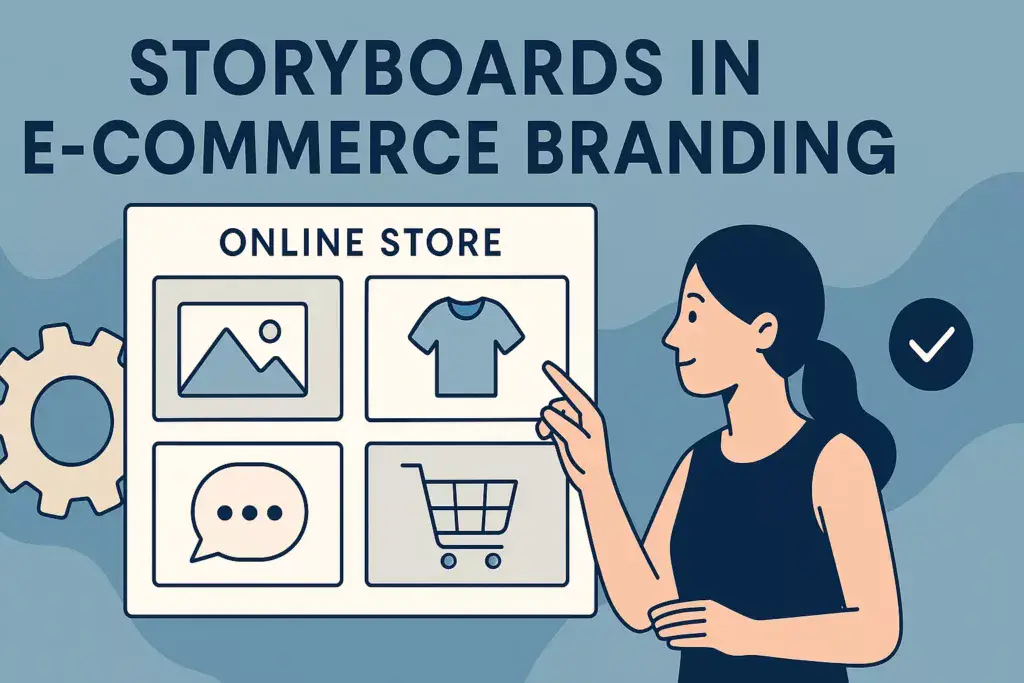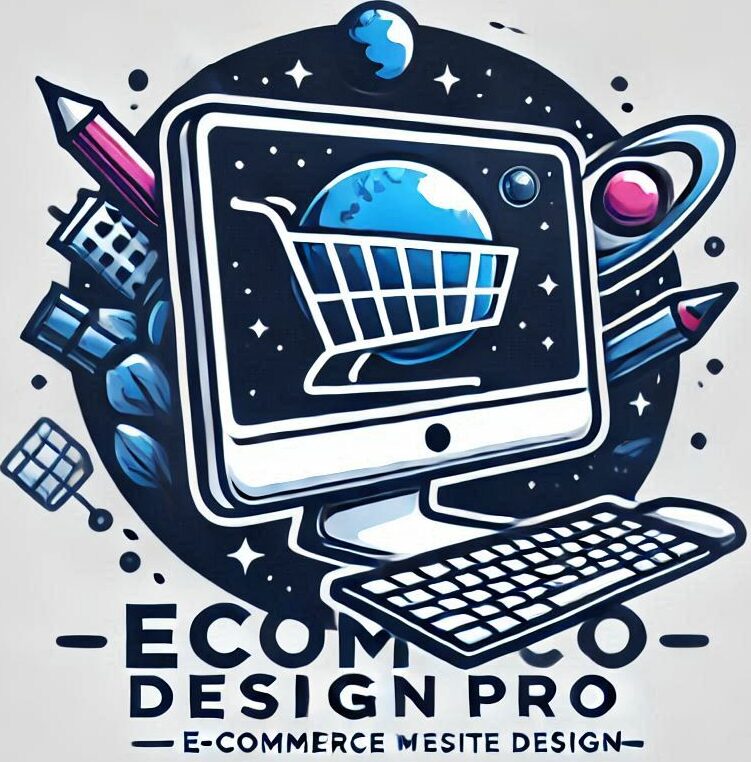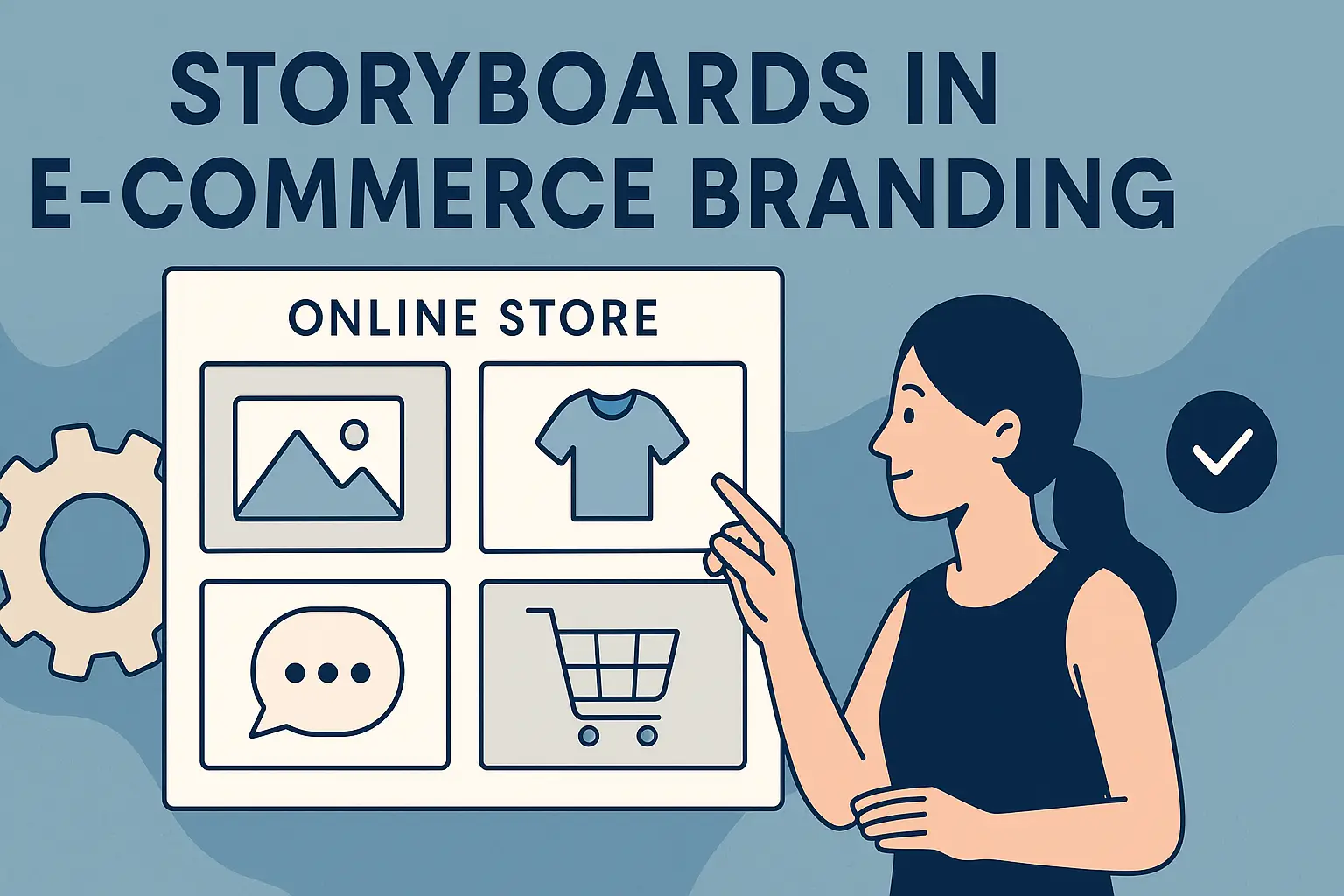
In the bustling world of e-commerce, nailing your brand’s visual identity often makes or breaks a business. Here’s where storyboards in e-commerce branding come into play as an absolute game-changer. Essentially, a storyboard is like a visual roadmap. It allows you to see and plan out every twist and turn of your brand’s story before it unfolds in real time.
So what’s the main purpose here? It’s all about communication. Storyboards are tools for visual storytelling. They help you lay out a sequence of events, breaking down complex ideas into digestible, visual chunks that are easier to understand and execute. This is not just about pretty pictures but ensuring every stakeholder is on the same page from the get-go. Nobody likes surprises in the world of commerce, and storyboards help keep those to a minimum.
When you think about storyboards, maybe old-school cartoon sketches pop into your head. But for today’s e-commerce pros, storyboards have evolved, integrating seamlessly into digital workflows. They help translate creative jargon into something palpable, aligning creative visions with business objectives.
Integrating storyboards into your e-commerce brand planning means thinking ahead. You’re avoiding that awkward “wait, what just happened?” moment by predicting it and planning beyond it. It’s like having a sneak peek into the future – but captured in carefully arranged visuals.
By using storyboards in e-commerce branding, businesses can strengthen their visual identity and ensure consistent brand storytelling.
Dissecting a Storyboard: Key Elements to Success
Creating storyboards in e-commerce branding that resonate involves more than just slapping some images on a page. It’s about focusing on the details that make your vision pop and drive your message home. So, what are these magic components? Let me break it down for you with the five most important elements.
First up is the frame. Frames serve as the building blocks of any storyboard, acting like windows into your brand’s narrative. Each frame tells a piece of the story, spotlighting key moments and actions that steer your audience’s journey.
Next, we’ve got the sequence. How you arrange those frames is just as crucial as the content. A logical, coherent flow ensures your message hits home. It’s like plotting a great movie scene – timing and arrangement are everything.
Then, there’s the text. Think of it as the script to your visual epic. Short, sharp, and strategically placed text can clarify intentions, add depth, and enhance understanding. Choose words that count, and you’ve got a killer narrative duo with your visuals.
The chosen visual style ensures that storyboards in e-commerce branding reflect the unique personality of the online store. This involves deciding on colors, themes, and aesthetic choices that align with your brand’s identity, ensuring every frame screams authenticity.
Lastly, don’t skip over the purpose. Each element should serve a defined role towards a common goal. Without a clear objective, your storyboard can drift off course, losing its effectiveness and impact. Align all visuals and narratives with your brand’s core message for a truly cohesive storyboard.
The Power of Visualization: Advantages of Using Storyboards in Branding
Embracing storyboards in your e-commerce branding strategy can open doors to amazing opportunities. Let’s explore the seven big advantages that make storyboards a must-have tool for any brand wanting to stake their claim in the market.
First on the list is clarity. Storyboards in e-commerce branding offer a crystal-clear blueprint for your branding projects. This precision allows every team member to be on the same wavelength, avoiding the chaos of miscommunication.
Flexibility comes next. With storyboards, you can tweak and adjust plans in real time without disrupting your entire strategy. This adaptability is crucial in a rapidly changing digital landscape.
Then there’s collaboration. Storyboards foster a team environment where creative, marketing, and sales teams work side by side, ensuring that everyone’s vision is captured and aligned.
Efficiency is another heavy hitter. By laying out every detail visually, storyboards streamline the decision-making process, saving time and resources. Everyone knows who’s responsible for what and when, thanks to the storyboard’s detailed roadmap.
Visualization, well, it’s all about bringing ideas to life. Turning abstract concepts into concrete visuals helps everyone involved see the bigger picture and grasp complex strategies effortlessly.
Control over brand consistency is huge. By relying on storyboards in e-commerce branding, companies can maintain consistency across every digital touchpoint. Storyboards help maintain a unified brand voice and image across all channels. This consistency builds trust with your audience, making your brand instantly recognizable.
Finally, storyboards pack a punch when it comes to creativity. They encourage thinking outside the box, allowing teams to experiment with ideas and visuals that they might not pursue otherwise without a structured visual plan.
Storyboards in Marketing: Bridging Creativity and Strategy
Storyboards in e-commerce branding are more than just a set of pretty pictures; they are the strategic glue that holds creative elements together in marketing. In the marketing sphere, a storyboard is a visual plan that lays the groundwork for compelling campaigns, ensuring that every piece of content works towards reinforcing your brand’s identity.
In marketing, storyboards are all about crafting narratives that speak to your audience. These visual blueprints are essential for translating abstract ideas into tangible marketing strategies that resonate in the real world. They serve as a bridge between the wildly creative and the strategically practical, aligning big-picture visions with actionable steps.
By utilizing storyboards, marketing teams can visualize the entire customer journey from start to end. This holistic view allows marketers to pinpoint opportunities, identify potential pitfalls, and develop campaigns that engage customers at every touchpoint.
It’s a collaborative triumph as well. Storyboards bring together various departments like content, design, and strategy to ensure every campaign component is singing the same tune. This collaboration not only boosts creativity but ensures everyone from designers to stakeholders is aligned on the objectives.
Breaking down complex campaigns into storyboard elements simplifies communication among team members, letting the creative and logical sides of marketing mesh seamlessly. It’s like having a cheat sheet that everyone can follow and contribute to, making the campaign development process smoother and more efficient.
When used correctly, storyboards in e-commerce branding help marketing teams balance creativity with measurable strategy.
For further insights into storyboarding for marketing and brand strategy, check out this guide on how to develop a storyboard for marketing, particularly relevant to storyboards in e-commerce branding.
Implementing Storyboards: Strategies for E-commerce Success
Getting storyboards off the ground in your e-commerce strategy isn’t just about having the right tools; it’s about using them effectively to connect creative, marketing, and sales departments. Here are some strategies to get you started on the right foot.
Kick things off by setting clear goals. What are you trying to achieve with your storyboards in e-commerce branding? Whether it’s launching a new product or redefining your brand voice, having a defined objective keeps your storyboard purposeful and aligned with broader business aims.
Embrace the digital age by using online tools that make storyboarding more interactive and accessible to remote teams. Platforms that offer collaborative features allow real-time edits and feedback, keeping everyone in the loop and engaged.
Don’t shy away from experimenting. Storyboards aren’t set in stone, and testing different approaches can uncover new creative pathways. Encourage team members to suggest tweaks and innovations that could enhance the final output.
Keep it flexible. Storyboards need to adapt as your campaign evolves. Market dynamics change swiftly, so preparing to adjust your storyboard on the fly can keep your brand strategy relevant and fresh.
Preparing for challenges is part of the journey. Understand common obstacles like unclear communication or overcomplicated visuals, and develop processes to counter these issues swiftly. Training sessions and regular feedback loops can help mitigate potential hiccups.
Finally, focus on optimization. Ensure that your storyboards are not only visually captivating but also aligned with your digital platforms and brand strategy. Tailor your storyboard for different channels and audiences, ensuring messages hit home every time.
Optimized storyboards in e-commerce branding ensure visual consistency while adapting to different platforms and audiences
FAQ(Frequently Asked Questions)
What is the main purpose of a storyboard?
The main purpose of a storyboard is to visually communicate ideas and structure. In e-commerce branding, this ensures every stakeholder understands the brand’s vision, campaign flow, and customer journey.
What are the 5 most important elements of a storyboard?
The five most important elements are:
1. Frames – visual snapshots of brand moments.
2. Sequence – logical order of those frames.
3. Text – short notes to clarify context.
4. Visual style – colors, themes, and design choices that reflect brand identity.
5. Purpose – the ultimate goal that ties it all together.
What are the 7 advantages of using a storyboard?
The seven advantages include: clarity, flexibility, collaboration, efficiency, visualization, brand consistency, and enhanced creativity. Each one makes storyboards in e-commerce branding a powerful tool for planning and execution.
What is a storyboard in marketing?
A storyboard in marketing is a visual outline of campaigns, showing how creative concepts will unfold across channels. In e-commerce branding, this ensures marketing efforts stay aligned with business goals and deliver consistent messaging.



I’ve always found storyboarding in e-commerce branding to be like sketching out a mini-movie for your product; my favorite realization was how much smoother the creative process becomes when the team’s on the same visual page. In one case, mapping out the customer’s journey frame by frame helped avoid missteps in tone and messaging, and even flagged where emotion needed a boost. In your experience, do you find that clients or collaborators pick up on vibe changes better when visuals come before copy? And have you seen storyboards shift brand strategy mid-project, maybe revealing a more compelling narrative that wasn’t apparent initially?
Thanks, Slavisa! I love your “mini-movie” analogy—so true. When visuals come first, I’ve definitely noticed that teams align faster and catch tone mismatches early. And yes, I’ve seen storyboards completely reshape a brand’s narrative midstream. It’s amazing how much clarity that process brings! Appreciate your insights as always.
Wow, this makes so much sense. I’ve been avoiding visual planning because I thought it was too complex, but you’ve broken it down beautifully. My biggest challenge is getting buy-in from my team when I propose new ideas. Would starting with a simple storyboard make my suggestions feel less overwhelming to them
Thanks, Linda! Absolutely—starting with a simple storyboard is a great way to ease your team in. It keeps ideas clear and visual without feeling overwhelming. It’s often the nudge people need to get on board!